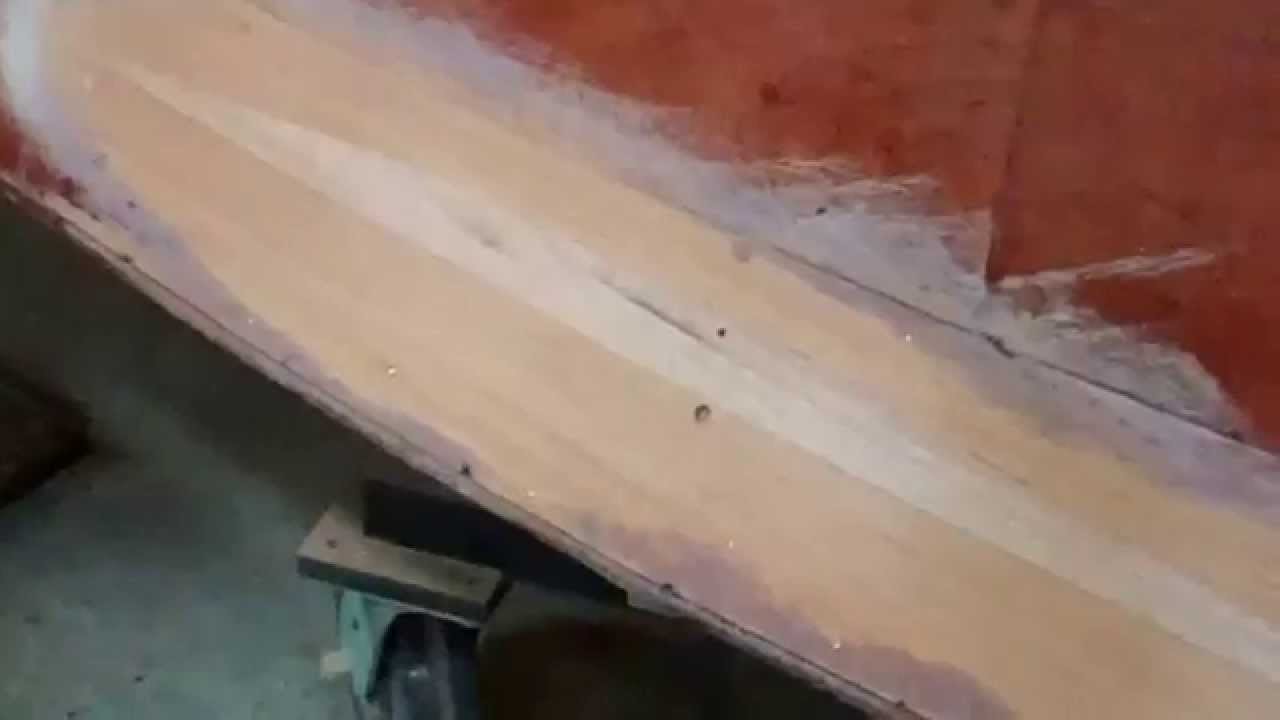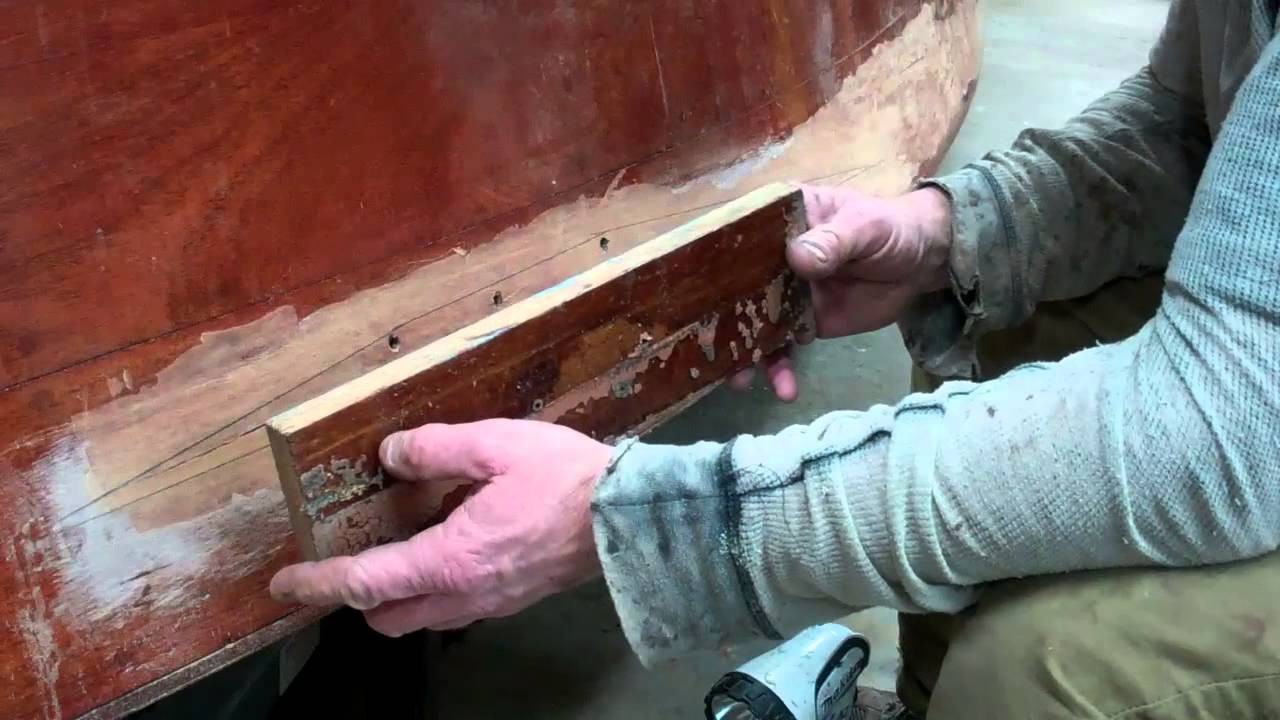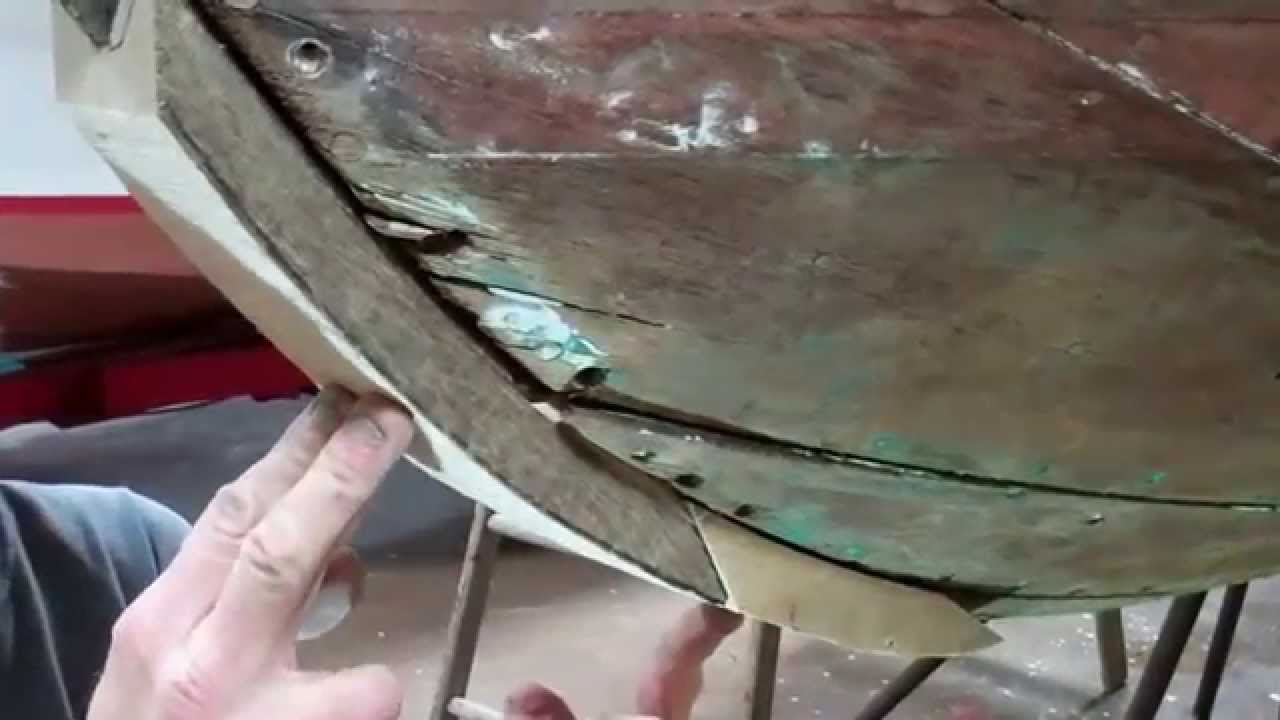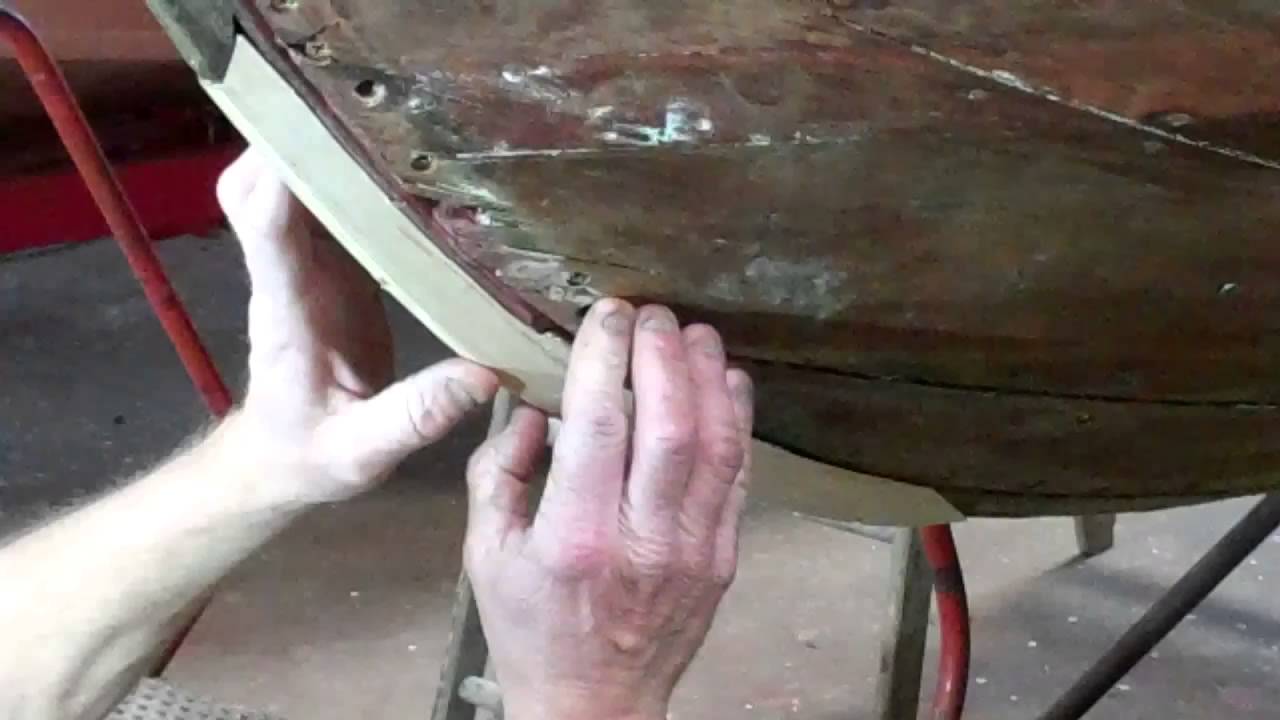Our January 24, 2015 workshop included a clinic led by John La Fountain on using a Dutchman for repairing the stem of 1953 Shepherd 22’ utility we are preserving.
Following is the handout he prepared and distributed to workshop participants.
1. Inspect stem and knee to determine if a Dutchman can solve the rotting and grain separation issues where the stem and knee meet.
2. Remove the bad part by cutting away any rot or split-out wood.
a. Always cut the top at an upward angle relative to the leading edge of the stem so that water runs off the Dutchman, not down inside it.
3. Make a template using cardboard.
4. Locate a straight-grained, clear piece of white oak – usually 8/4, as it was here. (Be sure to wear heavy gloves!)
a. Using a band saw, rough-out the mating surfaces between the Dutchman and stem or knee, after transferring the templates to the blocks of wood.
b. Rough out the abutting faces of the two Dutchmen.
5. Sand the Dutchmen to shape
6. Re-fasten the leading ends of the planking – or strakes in a lapstrake hull – bedded in 3M 5200.
7. Repair any rot, cracks or over-sized holes with TotalBoat Thixo Thickened Epoxy adhesive now. (The above-waterline seams will be affixed with TotalBoat Wood Epoxy System.)
8. Once epoxy has cured, do a final sanding and shaping of both Dutchmen and the surfaces they will mate to on the stem and knee.
9. After a final check for fit, some final sanding, fit the Dutchmen in place and one fastener pilot hole into each.
10. Glaze both surfaces with TotalBoat Thixo, and the abutting surfaces with 3M 5200, and fasten them in place with fasteners passing through the pilot holes.
11. Wait 24-48 hours.
12. Drill the carriage bolt holes from the inside of the stem and knew out, and insert silicon bronze carriage bolts – 4 in the case of the Shepherd.
13. Do a final sanding and fairing.
14. You are ready for paint!





